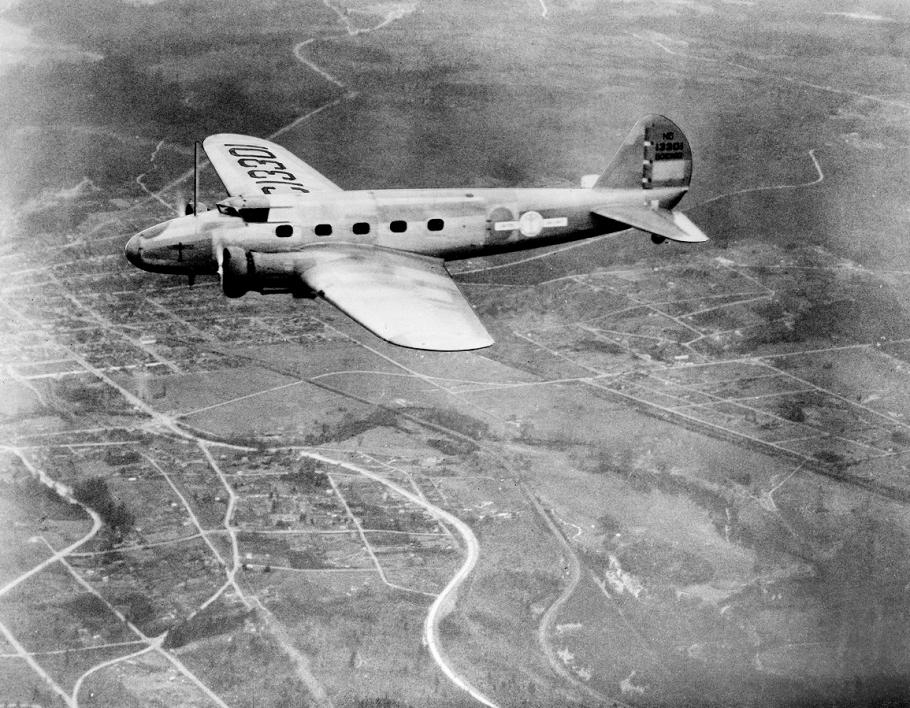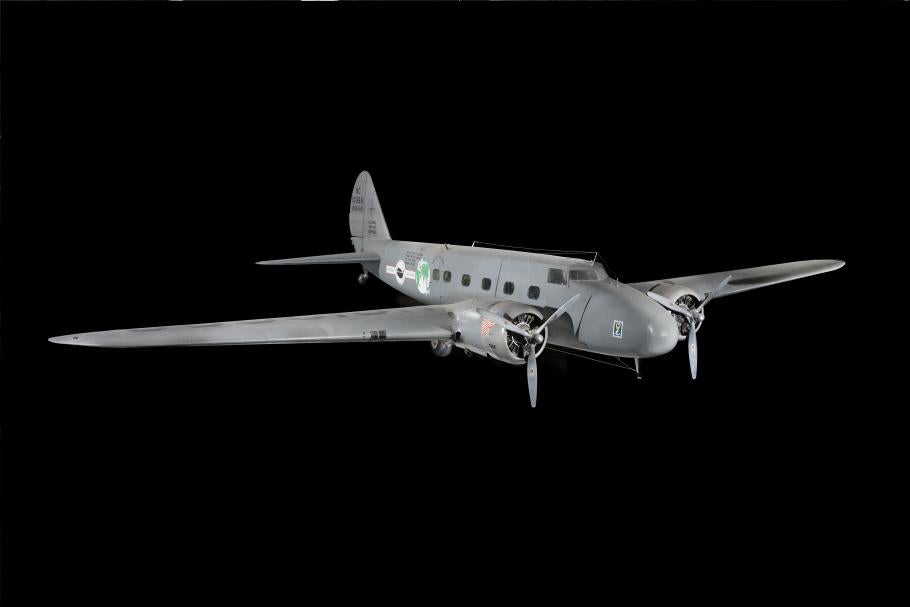The following is an excerpt from The Boeing 247: The First Modern Airliner by curator Robert F. van der Linden. It cites an article entitled "The American Way" from a 1934 edition of Popular Flying.
Throughout the latter half of 1933, the full fleet of fifty-nine Model 247s were carrying passengers, mail, parcel post, and air express with speed and regularity. A typical trip was delightfully described by Briton E. G. Gordon England in Popular Flying. Wishing to visit an ailing acquaintance in Chicago, England chose to fly, on the suggestion of friends, on one of United's 247s, because this was the quickest possible way.
Even with flights almost hourly, the 247 service was so popular that tickets had to be booked well in advance. England received a seat on a reserve flight that left on the half hour to accommodate the extra loads. He began his trip in a chauffeur-driven seven-place Cadillac limousine, provided by the airline, which whisked him to Newark Airport from downtown Manhattan. Despite the effortless drive, he was quite annoyed at having to pay seventy-five cents for the privilege. ''Why isn't this included in the ticket?'' he queried.
Swiftly, England was shepherded into the comfortable waiting room, his ticket processed and his baggage checked. Outside, the crew was completing its final preparations on his aircraft, impressing him with ''the air of quiet efficiency about the whole organization.'' Once called, he and his fellow eight passengers boarded the 247 at 4:30 p.m. ''While we were taking our seats, a small electrically illuminated notice was shown at the front end of the cabin, prohibiting all smoking and asking us to fix our seat belts. . . . '' When completed and checked by the attendant, the pilots opened up the engines ''and in a surprisingly short run we were up and away.'' The performance of the aircraft was quite noticeable. ''The rapid rate of climb was most impressive and, as we did a half circuit of the aerodrome, I heard the retractable undercarriage being wound up.''
The extinguishing of the ''no smoking'' notice was the ''signal for our air hostess to busy herself handing round copies of the latest evening papers, magazines, and cigarettes, and fuss around each one to make sure that his or her particular wishes were being met.” England heartily approved. ''Somebody behind the organization was a good psychologist and it was obvious that everything was done to make you feel that this was the most ordinary, normal, and delightful way of travelling.'' Soft, clean pillows were provided by Miss Kiddoo who impressed England with her efficiency, well-trained manner, and the fact that she was a hospital nurse. England also approved of the 247's ride and comfort. ''The ventilation seemed excellent in spite of the smoking; the arrangements for the heat control were admirable, but the temperature kept too high for a Briton. A cruising machine carries her tail very high, so, in spite of the low wing, one gets a reasonable view.'' Flying over the mountains was disconcerting, however. ''The weather was bad and the ceiling was low-indeed, disagreeably low, as we had to fly over the dreaded Allegheny Mountains, and there was enough movement to call it rather bumpy; but the high cruising speed, therefore, gave one a feeling of a certain stiffness in the air.''
After an hour aloft, night fell as the 247 droned onwards over the crest of the ranges ''with certainly not much more than fifty feet below us at certain points. It soon became extremely dark and little or nothing could be seen of the surrounding country except for the lights of cars on the roads and the habitations as we passed, but with almost boring monotony, we seemed to pass the flashing beacons along the air route. It reminded me rather of going up a long sea channel at night and passing the flashing buoy lights. In the different parts of the route they are as close as ten miles apart.''
Cleveland, Ohio, was the first stop. ''As we approached the aerodrome, it was floodlit with a projector using what is known as the shadow beam. Down the center of the flood-light is a dark shadow just about the width of the machine and down this the pilot lands, so that while on each side of him the aerodrome is brightly lit with a flood-light, he is himself landing in absolute darkness, so there is no dazzle of any kind.'' Immediately upon landing, the passengers were discharged into a waiting room to stretch and enjoy a small buffet while the aircraft was serviced with fuel, oil, and fresh batteries. Thirteen minutes later, they were again airborne. At this point, Miss Kiddoo offered dinner to each passenger. ''She appeared to have a wonderful selection of daintily prepared light meals. The Americans are past masters at attractive salads, sandwiches, and food of that kind. One could have either hot coffee and cream, or chocolate and cream, or the inevitable iced water if that were preferred.'' The coffee was excellent though England was a bit nonplussed while attempting to balance his tray on the pillow placed on his lap for that purpose. ''I still feel that small fixed tables would be a great advantage.'' After a brief stop in Toledo, the 247 flew on uneventfully to Chicago after a flight of 5 3/4 hours. Upon landing, England thanked Miss Kiddoo, hopped into the waiting Cadillac limousine and drove off to the St. Stephens Hotel. That cost him another seventy-five cents, which he paid under gentle protest.
England, E.C. Gordon. “The American Way.” Popular Flying, 2 (March 1934): 624-26, 660.
As cited in:
van der Linden, F. Robert. The Boeing 247: The First Modern Airliner. Seattle: University of Washington Press, 1991.

